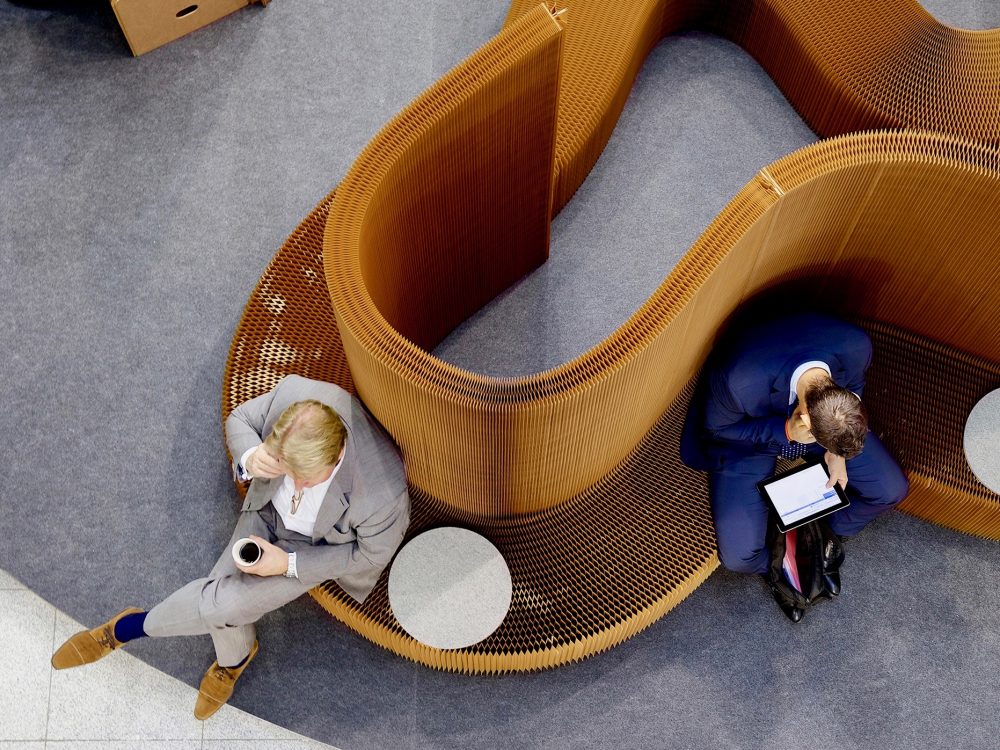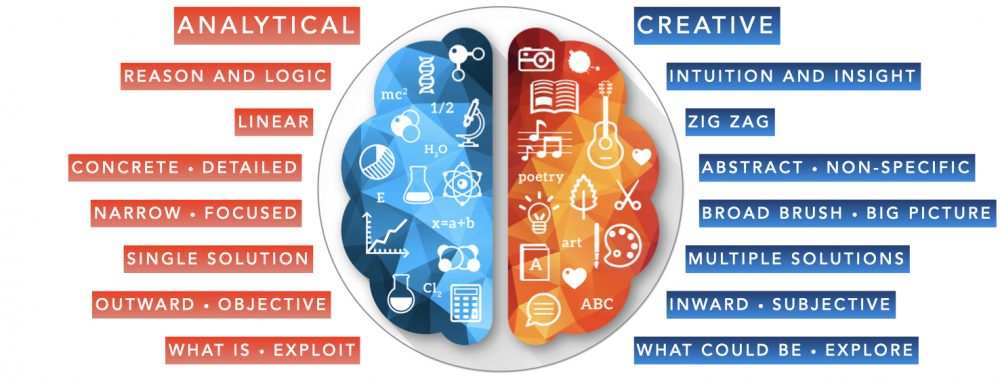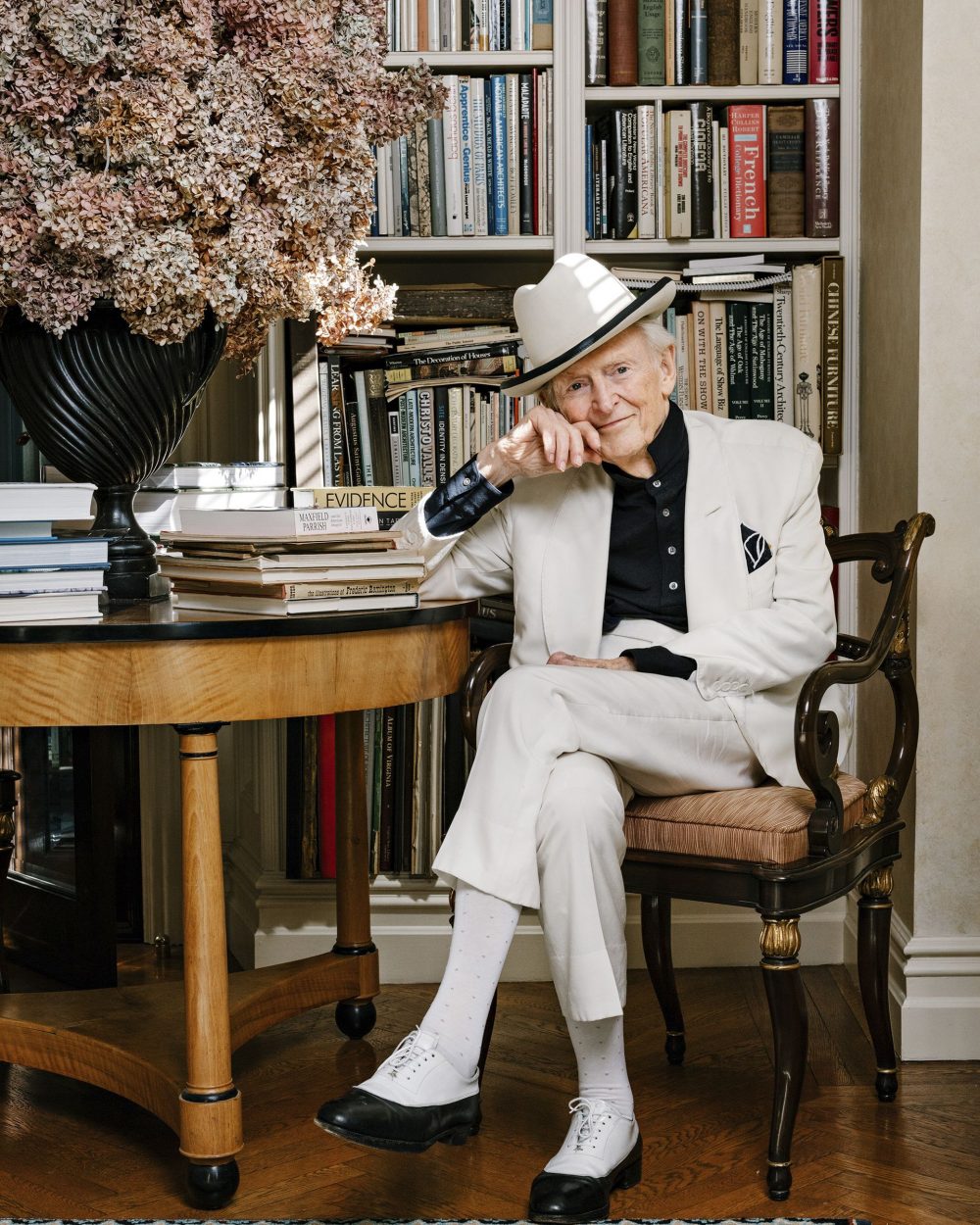Could social distancing actually boost the creative effectiveness of the spaces we produce?

You would be forgiven for thinking that social distancing only recently stormed into the global lexicon in the wake of the COVID-19 health crisis. Yet the phrase was already in the air nearly two decades ago, when it was associated with one of the most influential psychological theories to have emerged in recent times. The story of its original meaning is particularly relevant to workplace design today because it brings into focus several science-backed techniques for boosting creativity and spurring innovation through the shaping of space. With the enormous challenges currently facing our profession and the world at large, the need to re-tell that story and familiarize ourselves with these techniques has never been greater.

Our Binary Brain
The narrative begins in the early 2000s, when several researchers began exploring the relationship between mental processing and perceptions of distance. Through experimentation they came to discover that how close or far we view ourselves to be relative to an object of our attention determines which of two cognitive styles we’ll assume.
In everyday speech, we refer to these binary modes of mental processing as left- and right-brain thinking. Scientists generally prefer the terms analytic for the left, and synthetic, creative, holistic, or insightful for the right, because they’re more descriptive and in closer alignment with how our brain actually functions than left-right terminology.
Figure 2 above lists attributes associated with each style. Analytic thinking is rational, sequential, detail-oriented, narrowly focused, lends itself to solving problems having a single correct answer, draws from objective knowledge residing outside oneself, and seeks to take advantage of the world as it currently exists.
Creative thinking is its mirror opposite. It draws on intuition, imagination, and insight rather than logical reasoning; is often meandering and circuitous; sees things at a generalized and broad-brush rather than concrete level; arrives at multiple solutions to a problem; turns our thoughts inward rather than outward; and is exploratory instead of exploitative.
Relative to distance, we tend to assume an analytic mindset when our attention is directed toward something nearby, and a creative outlook when it’s far away.

Spatial Distancing
A simple method for picturing the relationship between mindset and physical distance is to imagine yourself up in an airplane (Fig. 3, right). You’re flying over farm country and you look down. How would you describe the scene? One analogy that comes to mind is that of an abstract painting, the terrain having been transformed into broad swaths of color, texture, light and shade.
Imagine next that you’ve parachuted out of the plane and landed safely below (Fig. 3, left). Whereas up in the air you would have been hard pressed to identify what exactly you were looking at beyond generic labels like ‘crops’ and ‘fields’, now you can discern everything for what it actually is, from the lettering on the tractor to the plant species sprouting up around your feet.
In the first case our visual experience prompts us to enter into a creative frame of mind, in the second an analytic one.

These shifts have been documented in numerous studies. A 2018 investigation, for instance, found that stock brokers operating from the upper floors in a high-rise tower routinely engaged in riskier trades than brokers occupying offices on lower floors. Riskier trades correlate with creative behavior because taking unconventional approaches to problem solving entails a willingness to expose oneself to critique, failure, and censure. Taking the safe route, on the other hand, aligns with an analytic mindset, self-preservation being best achieved by employing our rational faculties when faced with potential harm or loss. Creative people rock the boat, less adventurous types steady it.
So powerfully intertwined is our mental outlook with intimations of physical distance that words connoting geographic separation can by themselves determine cognitive style. In a 2009 experiment, one group of Indiana University students was told that a creative problem solving exercise they were about to undertake originated at a nearby school, while another learned that it came from a Greek university. Results? The first group outperformed the second on every measure of creative aptitude.

Designers aiming to promote occupant creativity can leverage these findings by configuring the built environment to amplify spatial expansiveness and depth. This can be achieved by providing access to views (Fig. 5, top); utilizing cool colors whose recessive optical properties make enclosing surfaces appear to move away from the viewer; setting ceiling heights ten feet and higher (Fig. 5, middle); where appropriate, reducing lighting intensity to render fine detail and spatial boundaries indistinct (Fig. 5, bottom); and installing artwork and graphics representing deep space either pictorially or textually (Fig. 6).
Temporal Distancing
Geographic proximity is just one distancing metric. Time is another.
In 2015 a team of psychologists from the University of Southampton investigated the impact of nostalgic recollection on creative output. They found that subjects prompted to think back to events from their personal past before completing a creative writing exercise demonstrated greater originality in their submissions than participants completing the same exercise absent the prompt.
As with spatial distancing, lived experience parallels psychological effect; we recall events, people, and information originating in our near past with far greater sharpness of vision and granular detail than those from long ago.

Consider employing design elements in idea spaces that convey the passage of time to boost user insights, such as the midcentury travel poster in Fig. 6. To my mind, this piece bats the equivalent of a psychological triple; not only might its historical provenance foster open-mindedness and inventiveness in the observer, but the representation of deep space in the landscape rendering, and its textual reference to a country presumably remote from the viewer, could effectively compound distancing responses as well.
Engaged on a project that doesn’t lend itself to a vintage vibe? Prefer futuristic aesthetics as a matter of taste? No worries; researchers have observed that projecting our thoughts forward in time induces the same shift toward holistic processing as looking back.

Social Distancing
Which brings us to the original story of social distancing, and how its current incarnation diverges from the earlier version.
For starters, how we use it today is a misnomer. It isn’t that experts wish us to be anti-social in recommending we stay six feet apart; if it were, they’d be urging us to forego online meetings and other forms of human interaction too. A more accurate term to describe their intent would have been ‘spatial distancing,’ but it’s too late to change horses now.
Of course, this is hardly a matter of national importance. I only bring it up because it highlights the difference between the two definitions. In contrast to present usage, the initial concept of social distancing really did pertain to interpersonal relationships, except instead of physical separation, it quantified distance in terms of social status.
People identify their social status relative to others through a variety of means. Dress is one. For example, someone wearing a white lab coat in a hospital environment is typically regarded as enjoying greater social and professional stature relative to, say, the average patient or visitor who lacks his or her medical expertise (and lab coat). Similarly, we intuit increased social differentiation between ourselves and a person wearing shorts and a t-shirt when we’re decked out in a tuxedo or long gown. In fact, even alone we experience a degree of remoteness from our ‘everyday’ selves when we upgrade our outfit from the casual to the formal.
The net effect of dress style on mental processing follows the same pattern as spatial and temporal distancing cues. According to the research, the more socially authoritative and hierarchically elevated we appear, the more abstract and insightful our thoughts. Remember that the next time you’re tempted to tackle a creative problem for work while lounging at home in your day pajamas — now, and in the post-COVID-19 era to come.

Bringing It All Together: Construal Level Theory
With so much experimental evidence linking cognitive style to perceptions of spatial, temporal, and social distance, you would think somebody would have come up with an overarching theory to tie them together.
They have. It’s called Construal Level Theory, or CLT.
The basic premise of CLT is that construing objects and information from a psychological distance stimulates abstract thinking, while doing so in close proximity results in a concrete style of processing. Abstract thinking goes hand in hand with the freewheeling, open-minded, non-specific, and exploratory characteristics of the creative mindset; concrete processing is synonymous with a highly focused, detail-oriented, and reason-based analytic style.
The takeaway for design professionals? Capitalize on CLT by configuring innovation-driven work environments to trigger psychological distancing through spatial, temporal, and social cues.

